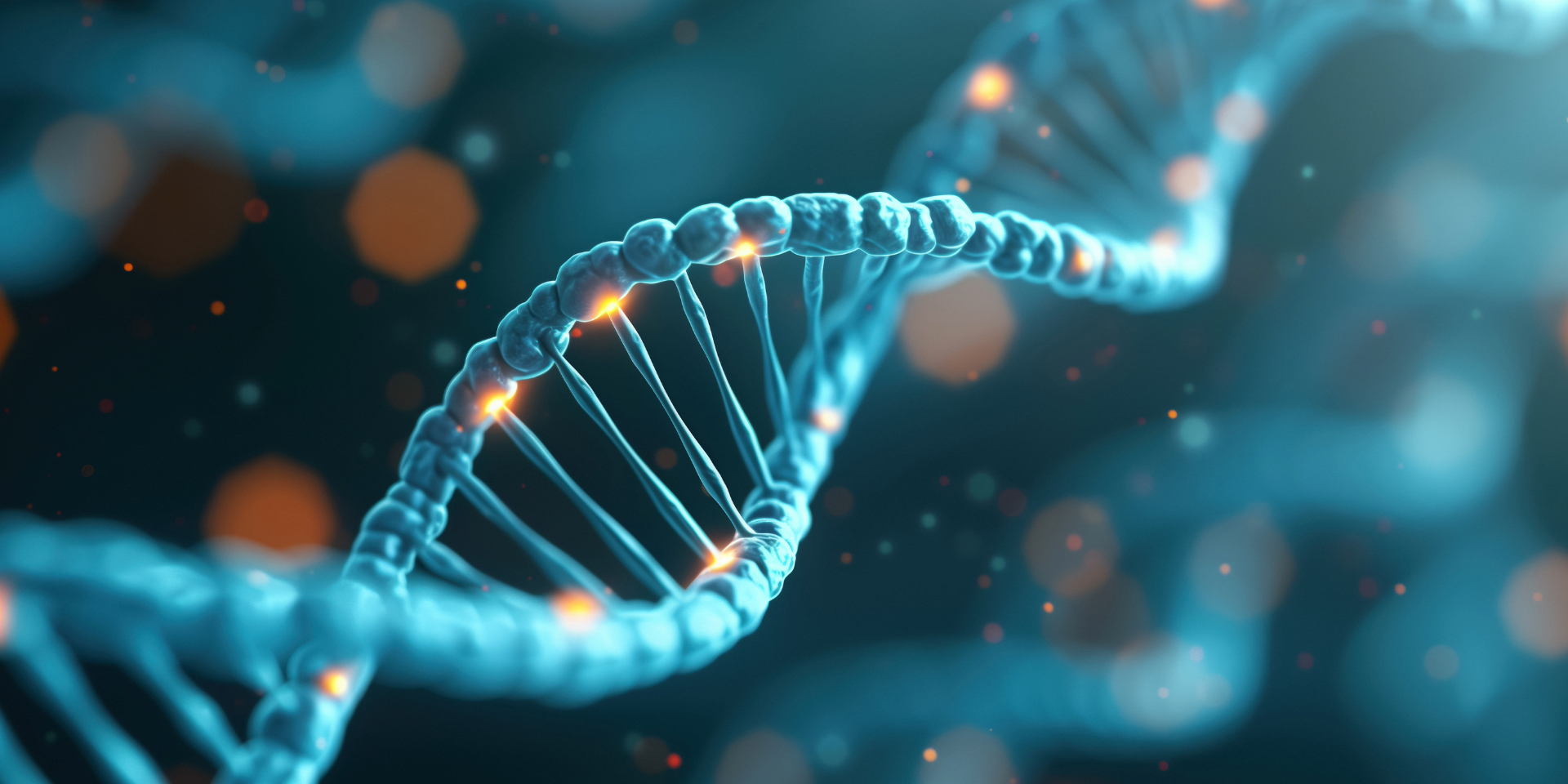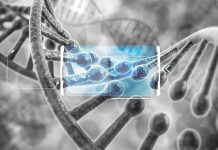Even those least familiar with evolutionary theory know that it involves a powerful driving force: natural selection. However, as we delve deeper into the theory, we find that things haven’t been that simple for a long time. This is because we no longer consider natural selection the sole engine of evolution, and from a certain point of view, not even the most powerful one.
A theory can be flawed due to its premises or the reasoning on which it is based. Regardless of the reasons, however, a flawed theory exhibits distinctive signs in the form of contradictory or unrealistic predictions. In this article, we will examine some of the deeper aspects of the theory of evolution, provisionally accepting its premises in order to evaluate its implications.
Natural selection
Natural selection is the principle that a change in a member of a species can affect its level of adaptation to the environment and, consequently, its chances of survival. More importantly, this change in survival chances can also influence the number of direct descendants who inherit the change. Generally, if the change increases the degree of adaptation to the environment, and therefore the chances of survival, the number of offspring is also expected to increase. Conversely, if the change decreases the degree of adaptation to the environment, the number of offspring is expected to decrease. Thus, “good” changes are encouraged to spread in a population and “bad” ones are naturally eliminated.
While the principle of natural selection is logical and consistent with observations in nature, it is not evolutionary in itself. Nevertheless, it forms the central pillar on which the theory of evolution bases its superstructure of arguments. Natural selection is evident in nature, and practically no one, whether an evolutionist or not, disputes this fact today. Disagreement arises over the limits within which selection is expected to manifest itself over time. In Charles Darwin’s classic formulation of evolutionary theory, natural selection has no limits—it is the driving force of evolution and has the unlimited power to shape life. Given enough time, natural selection could transform a single primordial cell into the diverse ecosystem of life that we see around us today.
The stability of species
If natural selection is the driving force behind evolution, then random changes are considered the fuel that powers this process. Today, we know that such changes, whether observed or hypothetical, can be categorically reduced to genetic changes in the form of DNA sequence variations, or “mutations”.[1] In this case, if mutations accumulated randomly in individuals of a species, the genome of the species would become increasingly divergent and degraded over time, losing its unity as different individuals and their offspring accumulated various mutations. In reality, however, the genomes of complex species are extremely stable. For example, the degree of variability in the genomes of individuals of any mammal species is only a few tenths of a percent.[2] Furthermore, almost all of this variability can be attributed to phenotypic differences between individuals[3] (e.g. height, build, and distinctive features), and therefore does not constitute recent mutations attempting to spread within the species. As we are going to see shortly, the fact that species genomes are so stable is very surprising if the species are undergoing evolution.
If evolution is a real phenomenon, it necessarily acts at the species level and not the individual level, even though mutations always occur at the individual level. But how common is it for a mutation that appears in an individual to spread through successive generations to the entire species? Evolutionary theory compels us to conclude that this process is commonplace, as macroevolution necessitates substantial accumulations of mutations at the species level. However, propagating a single mutation within a species is a difficult process likely to take a long time[4] given that populations tend to be large and spread over vast, possibly poorly connected, areas. Therefore, from an evolutionary theoretical point of view, it is to be expected that, at any given time, a multitude of mutations will be competing to spread in a species’ genome simultaneously.[5] Over a long period of time, it is clear that this process should lead to the accumulation of genetic differences between members of a species, degrading the stability of its genome to the point of destruction. So, under these conditions, how can the genome of a species remain exceptionally stable against the constant and inevitable tendency towards divergence and degradation?
This tendency towards divergence should not be confused with speciation, which is the process through which evolutionary theory explains the emergence of new species. In speciation, a group with a stable genome splits into two groups, each with a different genome, but both remain stable within their smaller groups. Unlike speciation, the tendency toward divergence and degradation discussed above is generalised among members of the species, making it impossible to separate the large group into smaller groups that retain genomic stability.
In evolutionary molecular biology, population genetics is the subfield that attempts to create theoretical models of phenomena such as speciation or the hostile interaction between the evolutionary need to propagate mutations, and the observed stability of genomes. Population genetics primarily analyses the process by which changes are fixed within a group of individuals. From a genetic point of view, this involves the transmission of a mutation from a single individual to the entire group, resulting in the indefinite presence of that mutation as an integral part of the group’s genome: hence the term “fixation.”[6]
Since the early 20th century, when the principles of genetics were integrated into evolutionary theory, natural selection has been considered the primary mechanism for fixing mutations. Mutations were rightly considered mostly harmful, even disastrous, to an organism’s viability and survival. However, evolutionary biologists used the principle of natural selection to explain how the spread of harmful mutations could be stopped: “selective death”, whereby the impacted organisms died much faster than the rest and therefore produced fewer or no offspring. At the same time, natural selection was also considered responsible for rapidly propagating extremely rare but beneficial mutations throughout a species, when they manifested. However, attempts to determine the mathematical model of this process have always encountered problems, with conflicting criteria complicating matters. Attempts to simulate evolution will be explored separately in a future article. For now, we will simply state that, despite nearly a century of attempts, there is still no integrated theoretical model of population genetics that can convincingly “simulate” macroevolution starting only from the basic principles of evolution (natural selection and random mutations).
The inadequacy of natural selection
As we have previously discussed in the context of population genetics, natural selection is invoked as the primary mechanism by which harmful mutations are prevented from spreading and beneficial mutations are promoted towards “fixation.” An important consequence of this reasoning is the idea that natural selection can justify the stability of a species’ genome. If the spread of negative mutations can be stopped in its tracks and rare positive mutations can be rapidly propagated (in a few generations), the result is a relatively stable genome.
As we mentioned, there is not yet a convincing theoretical model of the process. Things become even more complicated when we realise that the theory of evolution suggests that over 95% of a species’ genome has no function for the organism. This is known as non-functional DNA and was discussed in a previous article. It is important to emphasise that natural selection can only act on genetic changes that influence an individual’s degree of adaptation to the environment, for better or worse. Changes that produce no observable effects, or observable effects that do not affect an individual’s degree of adaptation to the environment, are in no way subject to natural selection; they are neither promoted nor discouraged in terms of their spread in the population. In these cases, natural selection is “blind.”
This raises the following dilemma: if natural selection is “blind” to 95% of a species’ genome, which is said to have no function, and 100% of a species’ genome is stable (not just the functional 5%), what process “stabilises” the remaining 95% of a species’ genome during evolution?
The second driving force
In 1968, the Japanese evolutionary biologist Motoo Kimura attempted to resolve a dilemma raised by JBS Haldane in 1957 concerning the large number of selective deaths required to rapidly fix a mutation in a population. Based on estimates of the mutation rate necessary for evolution made at the time,[7] Kimura found it impossible for an evolving population to sustain such high selective mortality.[8] He therefore proposed a “neutral” theory of evolution,[9] in which the role of natural selection was diminished: most mutations would in fact be neutral[10] and natural selection would govern only the few non-neutral mutations that had an impact on the individual’s fitness in their environment. Kimura’s most important insight is that neutral mutations spread within a species without the involvement of natural selection, which is unable to detect them. Instead, they spread by chance, a process that can be modelled mathematically using stochastic models[11] and which is referred to as “genetic drift.” Thus, the theory of genetic drift would explain the stability observed in species’ genomes, despite the fact that they are generally considered to be non-functional.
The neutral theory and the closely related theory of genetic drift initially sparked a great deal of controversy, but eventually gained acceptance among evolutionary scientists who were very attached to the idea of evolution “by natural selection.” The problems raised by Haldane persisted, as did the dilemma of having largely non-functional but stable species genomes. This eventually led to the widespread acceptance of Kimura’s solution. Today, the consensus among evolutionary scientists can be summarised as follows: the functional part of a species’ genome evolves and becomes fixed through natural selection, while the non-functional part evolves and becomes fixed through genetic drift, as permitted by the neutral theory.
Although not widely recognised, genetic drift is now considered the second driving force of evolution, alongside natural selection. Furthermore, genetic drift is responsible for the evolution of 95% of the genome, whereas natural selection only accounts for 5%. For this quantitative reason alone, many molecular biologists question whether genetic drift should be considered the primary driver of evolution rather than natural selection.
Regardless of these controversies, the theory of genetic drift faces significant challenges as it posits that most mutations essentially spread randomly within a population. Consequently, theoretical models that attempt to simulate this process while maintaining genome stability are extremely complex mathematically, and very limited in their applicability. Given the serious problems with modelling population genetics through natural selection, the task of models based on genetic drift becomes almost impossible when operating solely with the laws of chance. Such models undoubtedly exist, and significant scientific effort has been devoted to them, but their applicability is always restricted to a very specific range of conditions, which is completely unrepresentative of the necessary generality of the macroevolutionary process. Nevertheless, the theory is widely accepted, even though it has failed to resolve some of the fundamental issues of population genetics. Perhaps the scientists involved prefer to make comfortable projections of the future by looking back at the progress already made rather than looking ahead to the impenetrable wall of impossibility that an increasing number of small, mutually exclusive, theoretical models have no chance of getting past.
Molecular clocks
The idea that neutral mutations accumulate independently of natural selection has led to the hypothesis of the existence of a molecular “clock” that measures the time of evolution. In simple terms, if neutral mutations are fixed in the genome solely due to random processes, as the neutral theory suggests, the rate at which these mutations are fixed should remain constant over long periods of time. This rate would be the ticking of the molecular clock. If the rate at which neutral mutations accumulate is known for two existing species and it is assumed that they have a common ancestor, then the differences “accumulated over time” between their genomes can be used to calculate how much time has passed since their last common ancestor—that is, since the moment when the two genealogies began to diverge.
This is the basic mechanism of the molecular clock. However, to use it, an external calibration is required, which involves estimating the rate of accumulation of neutral mutations for each species. To estimate this rate for one species, another species is chosen for which the age of the last common ancestor is already known from “independent” data, most often based on fossil records. Using this prior knowledge of the age, we can deduce the rate of accumulation of neutral mutations by measuring the differences between their genomes.
For almost seven decades since its proposal, the molecular clock principle has been widely used to estimate various deep ages of evolution, often with disarming pretensions of authority and precision. In reality, however, even among evolutionary biologists, the molecular clock is recognised as inconsistent. This inconsistency has been justified by various assumptions about the variation in rates of accumulation of neutral mutations, depending on factors such as species, location within the genome, number of members of the species at a given time, average lifespan of members, and even the period in the species’ evolutionary history. These factors provide a blank cheque for obtaining any age. Even allowing for all this, the time shown by the clock can be calibrated with external data to support a wide range of possible ages, depending on the “need” of the researcher. This has led some evolutionary biologists to compare the whole process to the old witchcraft practice of “reading entrails.”[12]
Conclusions
Beyond the highly authoritative image with which the theory of evolution is popularised, and the certainty with which those who express doubts about its validity are dismissed, the theory itself is in a state of constant evolution. There are real disagreements within the scientific community, and real shortcomings in its conformity with observable reality. Thus, while the theory absolutely requires vast regions with no function in the genomes of species from one perspective, from another, it necessitates supplementing the principle of natural selection with the theories of genetic drift and neutrality. However, while evolution by natural selection still awaits a convincing theoretical model, evolution by genetic drift presents a modelling problem bordering on the impossible. The neutral theory also has another consequence: the molecular clock principle. Although popularised as certain and precise, the use of this principle to determine evolutionary ages is, in reality, notoriously unreliable and imprecise, to the extent that some evolutionary biologists deride it as akin to witchcraft. At the same time, it is worrying how contradictory data are so readily justified by improvised assumptions (see molecular clocks) and unverifiable theories (see genetic drift modelling). It is difficult to imagine what kind of evidence could falsify[13] a theory so flexible that it even accepts contradictions.
These discrepancies suggest that the theory is struggling to conform to reality and should not be accepted as fact. In this article, we have only discussed a few aspects of population genetics, but these issues are just the tip of the iceberg, the full extent of which we will outline in future articles.



















